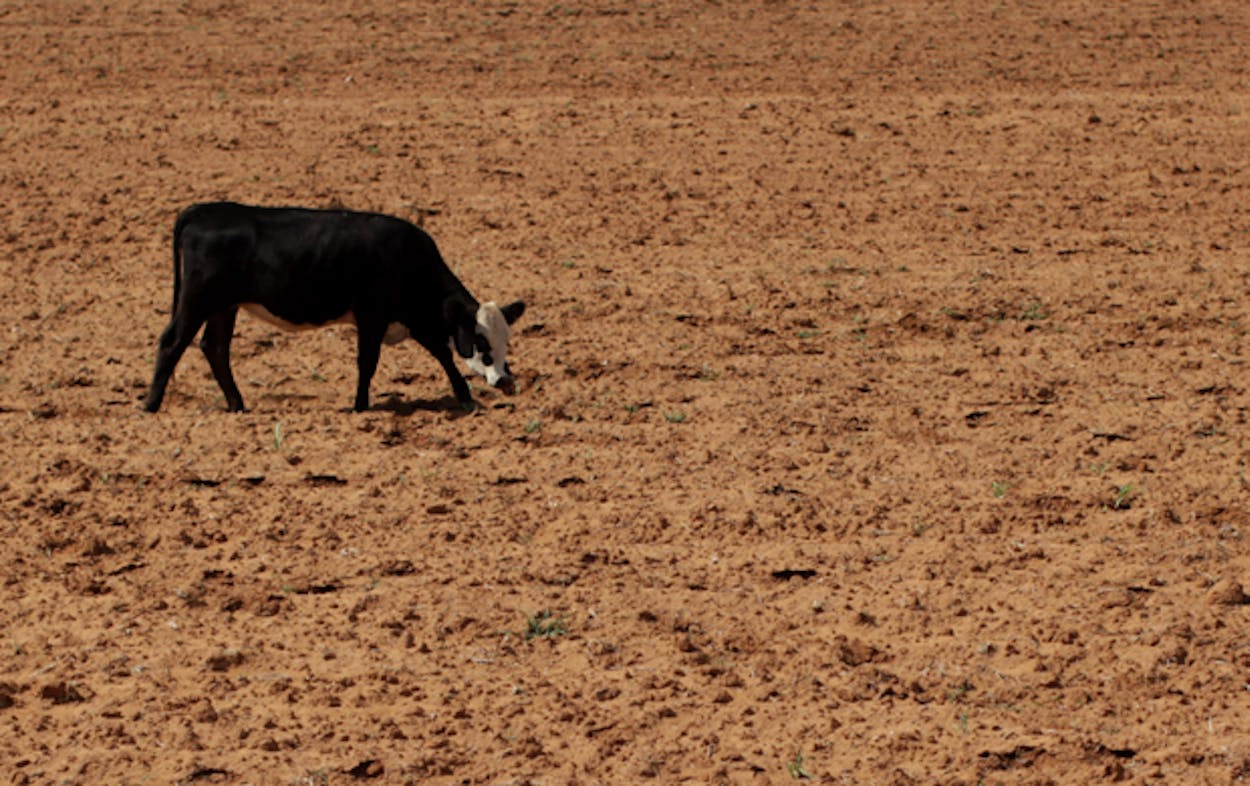Texas shed roughly 600,000 cattle in 2011, a record-setting twelve to fifteen percent drop in Texas’ bovine population that threatens to reshape the industry for years to come. The decline is especially alarming when put into context: “More than half of Texas’ agricultural income comes from the beef industry,” Jen Kastner of Midland’s NewsWest 9 reported.
“Every cow they sold this year isn’t going to be around to have a calf next year,” David Anderson, a livestock economist with the Texas AgriLife Extension Service, told Molly Hennessy-Fiske of the Los Angeles Times. “It means a smaller industry next year and probably the year after.”
Betsy Blaney of the Associated Press explored the implications of the decrease, pointing out that even as supply continues to drop, demand for beef keeps rising and prices continue breaking records. Beef prices, which jumped nine percent in 2011, are expected to rise more than five percent in 2012, according to USDA forecasts.
Part of the reason ranchers sold off herds in record numbers is because they had to turn to supplemental feed in this year of record drought, a switch that hurts when the price of hay has tripled in some areas of the state. Septuagenarian rancher Betsy Ross, of Granger, told Blaney that the drought and rising feed costs forced her to sell off 145 cows of her herd of 225. “It’s not a profitable year, heavens no,” Ross said. “If you can’t keep them on grass when they’re grass fed you’re not going to make any money.”
Justin McCarthy, an editor at Irish Farmers Journal who recently returned from a trip touring beef production areas in Texas and Kentucky, described the situation around Amarillo as dire. “The lack of water [in the Panhandle] has effectively decimated the regions beef cow herd,” he wrote. The region’s slaughterhouses, which can process 1,700 cows per day, are booked 75 days in advance, he reported.
And if the sheer numbers aren’t devastating enough, Jay Janner’s heartbreaking photos for the Austin-American Statesman help hammer home the reality of the drought and its impact on cattle.







